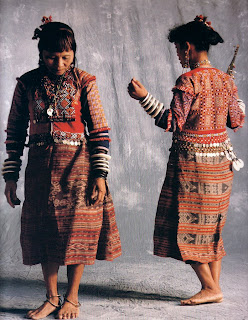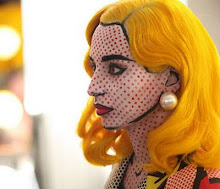Map of the Philippines
Although the Philippines has developed a mixed culture from the blending of foreign influences with native elements, there are still some ethnological groups whose culture remains unadulterated.
Here are some beautiful images of the Filipinos tribal costumes that still remain as part of their traditional culture up to this day.
Here are some beautiful images of the Filipinos tribal costumes that still remain as part of their traditional culture up to this day.





























Thank you for sharing all your images. I love how people take an interest in ethnic costumes. I believe if people want to preserve their cultural heritage, they should strive to do as you have.
ReplyDeleteThank you again.
wow... nice... i hope u could do research about the 7 hill tribes of bukidnon and their costumes
ReplyDeletehi! My brother is in charge of a "cultural diversity" activity in their work in San Jose California. He is thinking of wearing a diverse filipino costume (not the usual barong tagalog). What can you suggest? materials should be easy to access/source out. Thanks a lot.
ReplyDeleteNette
...hi!..
ReplyDelete..your blog is so nice,.
..i really love it..
..i hope you could show some info about kaulos in malita, dvavao del sur..
..thank you!
hi!thank you very much it really help me on my project thnx
ReplyDelete\
yea thanks a lot! dude. there is no history of those blouses thanks! i can't finish my work for school. -.-
ReplyDeletethanks for sharing the images, it's been very helpful!! :)
ReplyDeletethanks for colleting this picture
ReplyDeletehoping that more picture's to post
is there any meaning of their dresses and what they are made of? :)
ReplyDeletecan you give me some informations because we need it for our project. thank you :))
wow..i really appreciate ur blog.... looking forward for more details costumes of filipino ethnic groups (especially males) and also if you could publish textiles, patterns, motifs. i would really appreciates. good luck!!! heres my email: arch_litotabuldan@yahoo.com
ReplyDeleteit made me more curiuos about our culture
ReplyDeletethank you for sharing.these photos are great.my kids now know what our costumes were.more power!!
ReplyDeleteWhere in Manila or at what website can I buy B'laan and Bagobo costumes?
ReplyDeleteHey really interesting blog... appreciate the initiative... love the work! :)
ReplyDeletenice, informative, thanks this helps my research for costumes
ReplyDeletea very good carefully prepared examples - looks truly authentic - which seemed to had been modelled by the people who actually wears them. Many thanks.
ReplyDeletethanks. your blog's very useful and creative !
ReplyDeletethank you for sharing and showing me how rich the country is.
ReplyDeleteyour efforts is very much appreciated
ReplyDeleteplease add some more... so that young people of the next generations could appreciate the beauty of Filipinos, and being Filipino..
ReplyDeletecan you please feature another attire of the samals?i wanted to wear one of it in our school competition but it won't look good on me, I guess.
ReplyDeleteIts not lower Calirian...Its Lower Calarian Zamboanga City. I should know i been there
ReplyDeleteWhere can I get some of those nice costume?
ReplyDeletehi!! we have this activity in school called MR. & MS. INDIGENOUS... and if you don't mind ,do you have any suggestion what material are we going to use in our custom making? this blog of yours really helps us a lot. thanks!
ReplyDeleteHi. Interesting. Thanks for taking the time. Please include ata manobo traditional costume.
ReplyDeletethank you for the infos and all the beautiful images.. it helps me a lot to understand the traditional heritage specially fashion in Philipine. My son has a school project about Philipines.. he was so exciting to see these ..how we (Indonesian) and Philipino have a lot in common in traditional clothes. Interesting!
ReplyDeleteVery good.Request for images of Mansaka,Sama and Tiduray male and female costumes
ReplyDeleteHello! where can I buy these costumes? thanks
ReplyDelete